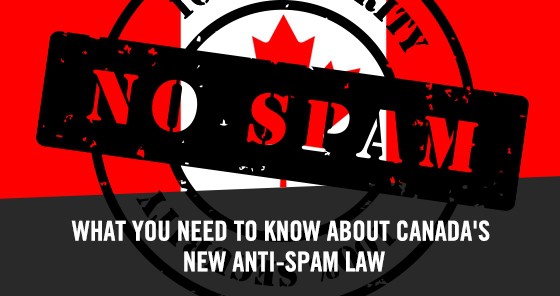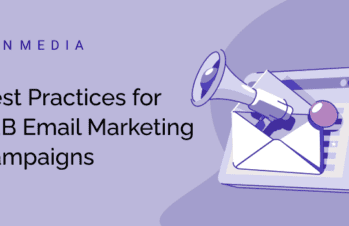On July 1, 2014, there will be a new sheriff in town…or should we say, there will be a new Mountie in the Rockies? That’s because that’s when the new Canadian Anti-Spam Legislation (CASL) goes into effect. It looks like a trend that started in the EU, in countries like Germany and Ireland, has now made its way to North America: stricter anti-spam regulations for email marketers.
Why is this pertinent to American businesses? Well, this law regulates emails and other electronic communications that are received by computers and phones in Canada. In other words, it doesn’t matter where the sender of the email is – if you have Canadian customers, this law applies to you.
CAN-SPAM
Americans are of course familiar with our own anti-spam legislation, the CAN-SPAM law, which requires the following from businesses who send marketing emails:
1. Emails can only be sent to people who have opted in, or explicitly agreed to receive emails from a certain business – or to people who have made a recent purchase from that company.
2. Every email sent must include a clear and simple way for recipients to unsubscribe, and when someone makes use of that option, a business has ten days to remove them from their email list.
3. A company’s physical business address must be included in each email.
CASL
So how is CASL different? First of all, it covers all commercial electronic messages, including emails, texts, IMs, and automated cell phone messages. Any electronic marketing message sent to a phone or computer in Canada is included under this law.
Secondly, while CASL also requires people to opt-in to receive marketing emails from a business, it is stricter about the process. Companies must obtain explicit consent from each person they wish to email, but it’s not as simple as checking a box that says, “Check here to get our emails!” Any form inviting people to sign up for marketing emails must include the following elements:
1. Purpose: It must explain that the person is signing up to receive marketing emails.
2. Contact Information: It must provide the name, physical address, and phone number or email address of the company that will be sending the emails.
3. Options: It must let the person know that they can “un-consent” at any time.
4. Manual Opt-In: Customers must be required to manually check a box or enter their email address in order to opt-in – pre-checked boxes are not allowed.
Now, there are a few very specific exceptions to the explicit consent rule. Emails can also be sent to people who have made a purchase from that company in the last two years, or who have requested information from them in the past 6 months. They can be sent to people who have made their email addresses public in some way, but without specifying that they do not want marketing emails sent to them. And they can even be sent to people whose “business activities” are relevant to a company’s in some way, and who have given that company their contact information, without also saying they do not want marketing messages from them. Similarly to the CAN-SPAM Act, under CASL, emails must include the identity of the sender, contact information for the business, and a way to unsubscribe.
Now, we here at Zen Media are not in the business of giving legal advice, so this blog is only meant as an informational overview. For advice on complying with this new law, be sure to contact your lawyer. And for more information about this new legislation, visit fightspam.ga.ca.







